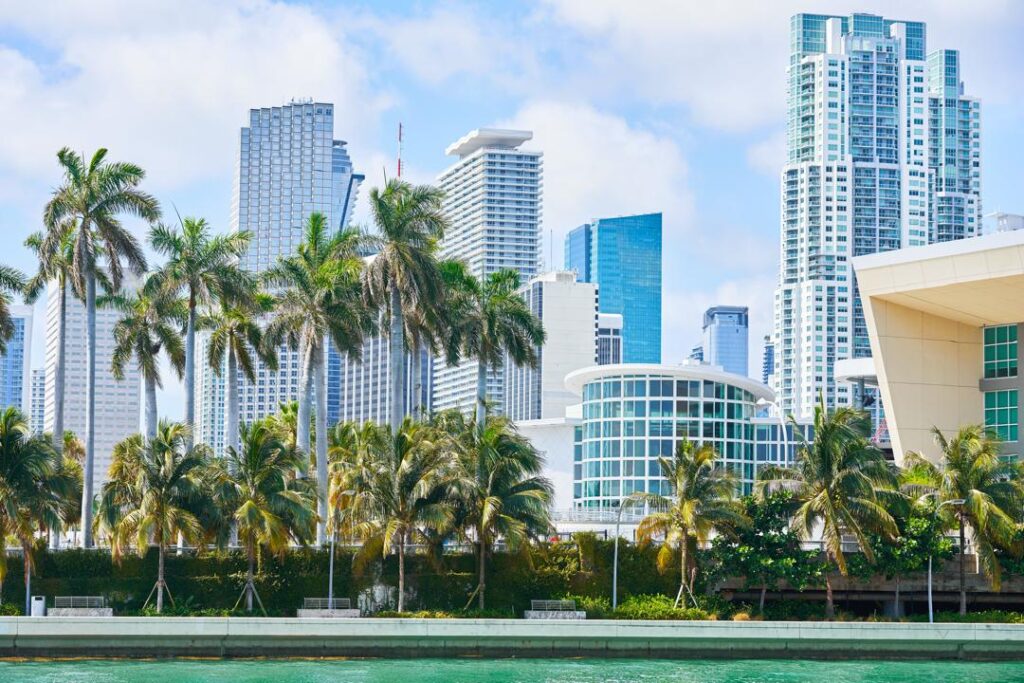Miami’s real estate market has long been known for its brightness. Oceanfront condos, global investors, and steady demand have kept things hot. But by 2025, things are shifting. Inventory is creeping up, days on market are stretching, and buyers are beginning to regain bargaining power. The question many are asking is: Has Miami entered a buyer’s market?
This article shows you how to recognize the signs, what local nuances to watch in Miami, and how buyers and investors can make the most of the changing landscape.
What Is a Buyer’s Market?
A buyer’s market is when supply outweighs demand. That means more homes for sale than qualified buyers actively purchasing. In such a market, sellers begin making concessions: lowering prices, paying closing costs, or accepting repair requests. Homes stay listed longer, and buyers wield more negotiating power.
In contrast, during a seller’s market, buyers compete aggressively, often waiving contingencies just to win. Miami has seen that era. But as the balance tilts, knowing when that shift occurs gives you an edge.
Key Indicators of a Buyer’s Market in Miami
To detect a buyer’s market, watch for these signs:
Inventory Levels
One of the earliest signals is rising inventory. If too many homes crowd the market, buyers have options. Data from Realtor.com’s Miami overview shows median listing prices slipping year-over-year and home listings increasing.
In a balanced market, six months of supply is often considered equilibrium. When supply goes beyond that, buyers gain leverage. Miami, historically constrained on supply, is now seeing neighborhoods like Kendall and Homestead add more listings.
Days on Market (DOM)
When homes start sitting unsold for longer, pressure mounts on sellers. In mid-2025, reports show that in Miami-Dade County the average days on market rose to 77 days, up from around 65 the year before.
Other sources list even higher averages: some closed homes took 124 days to sell, while active listings were listed for 139 days. This trend is a clear sign buyers are getting more time to negotiate.

Price Trends
Flattening or falling prices across multiple neighborhoods is another red flag. While some areas like Brickell and Downtown have slight dips due to increased condo supply, family markets in Pinecrest or Coral Gables hold more steady.
In April 2025, single-family homes in Miami-Dade sold at a median of $590,000, up 6.3% year-over-year, but condos in some parts saw price declines and extended listing durations.
Also, according to Redfin, Miami median home prices were down 1.4% compared to the prior year in some reports, and homes were spending ~104 days on market.
Economic and Local Factors
Beyond raw metrics, local forces sway the balance. Rising insurance costs in Florida are adding thousands to annual housing expenses premiums have surged as much as 34% in parts of the state.
Insurers exiting the state or refusing new policies create pockets where coverage is limited, pushing buyers away. The Florida insurance crisis, driven by fraud, litigation, and climate risk, means more buyers factor insurance into affordability decisions.
The combination of cooling buyer demand, higher ongoing costs, and a gradual increase in new inventory makes Miami’s shift less abrupt and more gradual but detectable for those paying attention.
Why Buyer’s Markets Matter in Miami
Understanding this shift isn’t just academic, it changes how buyers and investors should act.
For Homebuyers
If Miami truly softens into a buyer’s market, there’s room to negotiate. You can ask sellers to cover closing costs, repairs, or appliances. You won’t have to rush or waive inspections just to compete. The added breathing room gives you time to compare neighborhoods and financing options.
First-time buyers especially benefit. For example, programs like Miami First-Time Home Buyer Programs (2025): Grants, Loans, and Incentives You Should Know become more viable when market pressure eases. That article explores how county and state incentives help reduce upfront costs.
For Investors
Investors can find hidden value. Properties that lag get their prices cut, improving cash-on-cash returns. In a cooling market, you’re less likely to overpay. But you must remain vigilant about rising insurance and maintenance costs, which erode profit margins. The Insurance Crisis 2025 article dives into those risks, particularly in Florida and California.
Still, buyer’s markets often reward long-term thinking. Acquiring undervalued assets in Miami’s growth corridors can set you up for gains when demand returns.
Miami-Specific Considerations
Miami’s market isn’t like any other. Geography, climate, and global appeal all change the rules.
International buyers remain a powerful stabilizer. Even when U.S. demand softens, foreign investment into Miami can dampen drastic price drops.
But climate risk and insurance create real friction. Properties closer to water or in flood zones may be priced with large discounts to account for coverage costs. Inland neighborhoods with fewer climate hazards are becoming more attractive to budget-sensitive buyers.
Condo markets have different dynamics than single-family homes. In April 2025, condo inventory crossed into what some call “buyer’s market territory” in parts of Miami-Dade with price cuts and extended listing durations dominating.
Another nuance: in rapidly developing neighborhoods like Edgewater or Wynwood, new condo supply may oversaturate demand, pulling down pricing temporarily even before broader market shifts arrive.
How Buyers Can Capitalize on a Buyer’s Market
If Miami is leaning favorable toward buyers, here’s how to act smart:
Begin by getting strong pre-approval. Even when market pressure eases, sellers still prefer serious buyers who have financing lined up.
Focus your search on properties with red flags such as those listed for long periods, price drops, or seller concessions. These often indicate motivated sellers.
Negotiate beyond price request that sellers cover closing costs, repairs, or appliances. In a cooling market, sellers are more open to those deals.
Work closely with agents who specialize in buyer-side opportunities and understand micro-markets in Miami. Knowledge of context is key.
Always run long-term math. A slight price drop may be acceptable if you believe in the area’s fundamentals and upside. Combine that with insured protection and expect increased maintenance costs.

When Might Miami Fully Enter a Buyer’s Market?
Many analysts believe the full transition will occur between late 2025 and early 2026. As mortgage rates ease and insurance continues to crack the cost ceiling, more buyers may pause, giving supply room to grow.
The National Association of Realtors’ 2025 forecast suggests modest affordability improvements with job growth in key metros driving stable demand.
Areas likely to soften first: Bulks of Miami-Dade on the urban fringe (Homestead, Cutler Bay), rising-supply neighborhoods (Doral, North Miami), and lower-tier condo segments in Brickell and Edgewater.
It won’t be sudden, but if enough buyers hesitate, that tipping point becomes more obvious.
Conclusion
Miami’s real estate cycle is shifting. With inventory rising, listings staying longer, and local pressures like insurance and development costs mounting, signs point toward a buyer’s market in 2025.
That doesn’t mean a collapse, just more balance. For homebuyers, it’s a chance to negotiate with confidence. For investors, it’s a time to acquire wisely, analyzing risk carefully.
If you’re paying attention, you’ll spot these early signs and be ready to act, not chase the market.


